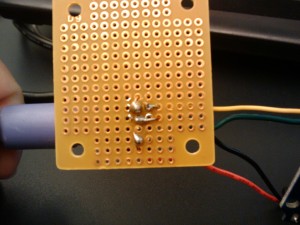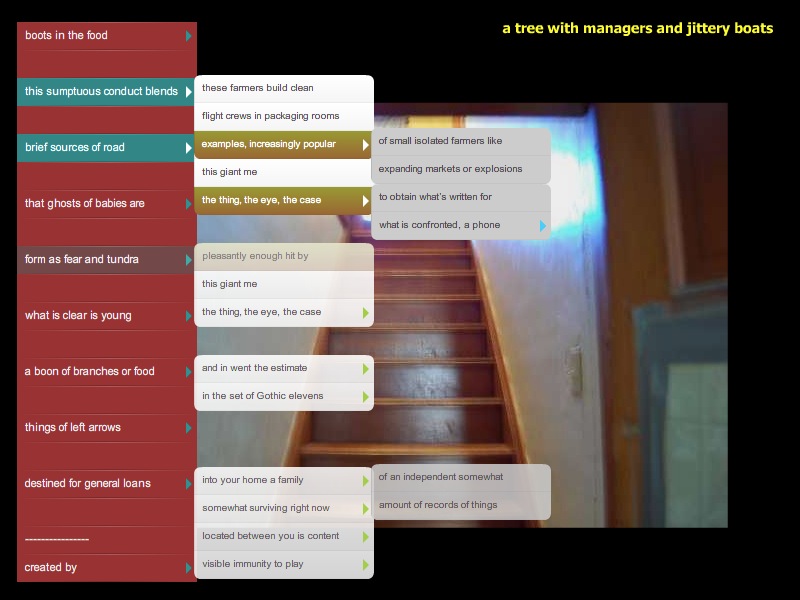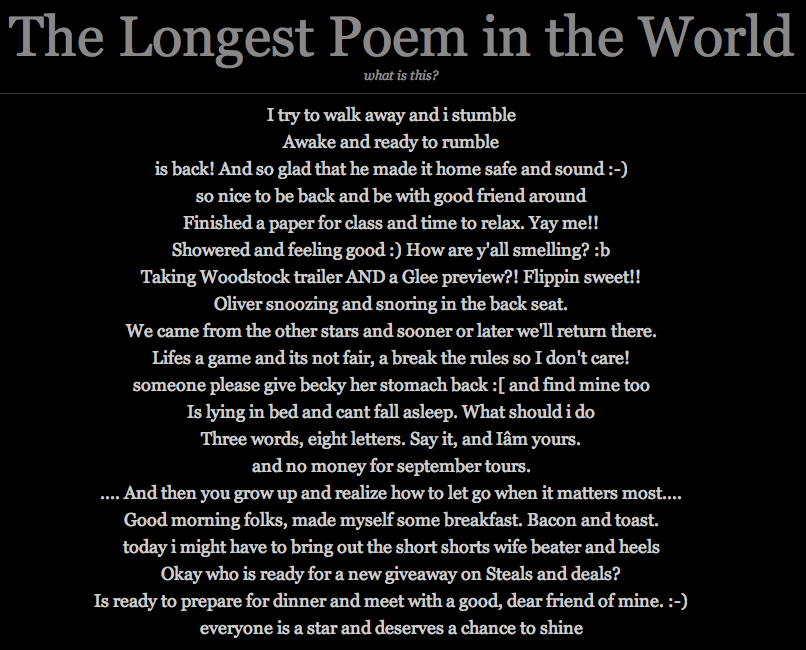(update: I made each word in the list after the cut into a google search link, so you can see which -toberfests are -tobertaken. I can’t believe “molttoberfest” doesn’t exist!)
AUTUMN IS UPON US, and you know what that means: the sudden appearance of neologisms and portmanteaux designed to mimic the word “oktoberfest.” Rocktoberfest, Shacktoberfest, pop and lock-toberfest. It’s an annual profusion of textual creativity! And as readers of this blog should know, where there is a profusion of textual creativity, there is a text generator waiting to happen.
So I put it to myself to create a -toberfest portmanteaux generator with the tools most readily at hand: grep and awk. Here’s the command-line I ended up with:
egrep '^[^aeiouy]*(o|aw)[^aeiouy]?[cfhkptx]+$' sowpods.txt | awk '{print $0 "toberfest"}'
The source file sowpods.txt is my standby English word list for text generation tasks. The regular expression reads: “find me every word that has o or aw following zero or more non-vowel letters at the beginning of the word, perhaps followed by a single non-vowel letter, and ending with one or more of any of the following letters: c, f, h, k, p, t, or x.” The awk program appends the string toberfest to matching words and prints them out.
The full list of portmanteaux that this simple program generates (all 365!) is below the cut, but here are a few of my favorites:
- Miami Heat fans! Start the NBA season out right with Boshtoberfest!
- Spoonflower announces a two yards for one deal during Clothtoberfest!
- Gather all ye dandies in your finest lederhosen as you celebrate Foptoberfest! (related: Tofftoberfest)
- If your -toberfest has a seating capacity of 99 to 500, and you’re not in the “Broadway Box,” it’s technically an offtoberfest.
- Why yes, there is a festival specifically for the nineteenth letter in many Semitic abjads. It’s Qophtoberfest!
- When, oh when, during the year can we get together to sharpen and polish our razor blades? Why Stroptoberfest, of course!
Lochtoberfest is already exactly what you expect it would be.
In generating this list, I had two criteria: (a) that around 90% of the generated strings “feel right” and (b) that the string “scotchtoberfest” be included in the results.
Criterion (b) was easily met, but (a) was not so easy. What does it mean for a -toberfest portmanteau to “feel right”? It’s highly subjective. For me, the quality of the vowel sound is key: the initial vowel in the portmanteau must rhyme with the initial vowel in “october.” I also found that the length of the vowel is key: the shorter the better, which is why my algorithm selects only words ending with voiceless consonants. (More on allophonic vowel length in English.) I singled out monosyllabic words simply because they’re easier to grep for.
I’m pleased with the results. A few quick googles reveal that many of these words refer to existing festivals, but many return no results (“did you mean bocktoberfest?”). Let me know if this list inspires you to create your own -toberfest, or if you have suggestions to improve my greps and awks.
Here’s the full list:
Read the rest of this entry »



